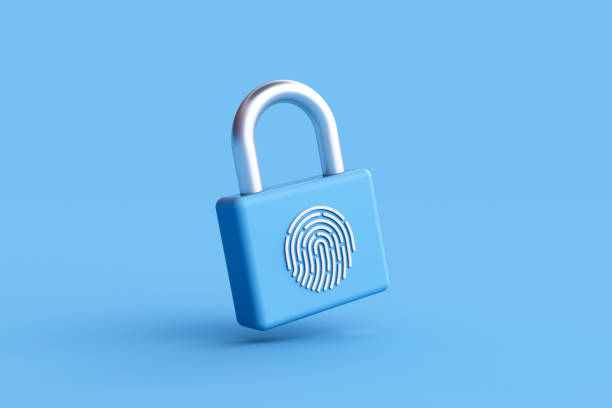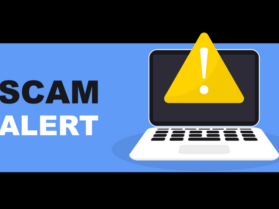Internet is a big-billion word. It has been acclaimed as a global information superhighway, radically changing the way we access information, communicate, and run an online business successfully. It has truly brought the greatest level of convenience to our lives, empowering us and making everything super easy. Popular and major search engines like Google, and Bing have played a vital role in making these vast hubs of information accessible to users.
Moreover, below the surface of the internet lies a complex and mysterious realm known as the Dark Web. Thrilled by reading the word. Well, it is obvious! This dark web is hidden from the eyes of search engines and other internet-savvy savvy's, arousing a major concern in the field of cybersecurity.
The internet, often hailed as a global information superhighway, has transformed the way we communicate, access information, and conduct business. It has brought unprecedented convenience to our lives, allowing us to find anything, connect with anyone, and explore virtually any topic within seconds. Major search engines like Google and Bing have played a pivotal role in making this vast treasure trove of information accessible to the masses.
The unique and clandestine nature of the Dark Web, including anonymity and illegal activities that flourish within the digital sphere has been a source of the need for Dark Web Monitoring.
In this comprehensive article, we’ll dive deep into the concept of the Dark Web, exploring its complete structure, the threats it incurs, and the role of Dark Web Monitoring in protecting your online identity. Let’s start on a good note by having an in-depth understanding of this concept and how you and your organization can thrive and strive in the ever-evolving digital landscape.
The Three Layers of the Internet: Surface Web, Deep Web, and Dark Web
To understand the importance of the Dark Web and Dark Web Monitoring, it is critical to first go through the structure of the internet. The internet is particularly divided into three layers:
1. Surface Web
The surface web is often like the tip of an iceberg, consisting of the part of the internet that is accessible and searched by engines like Google, Yahoo, and Bing. It is the common internet that users interact and use daily, where there is readymade availability of websites and content, blogs, e-commerce platforms, news sites and more.
2. Deep Web
Below this layer lies the surface web, basically a vast and hidden portion of the internet that isn’t indexed by Google, as in the search engines. The hidden web includes content and other media that are restricted from viewing it to users for legitimate purposes. Some the examples of deep web are online banking information, medical records and more.
Notably, estimates suggest that the deep web incorporates a significant portion of the internet, ranging from 96^ to 99% of the digital landscape that exists. This mainly highlights the sheer size and importance of the deep web from the perspective of the digital ecosystem.
3. Dark Web
The third and final is, Dark Web, where we reach the most secrets and evasive realm. Unlike the surface web and deep web, the Dark Web is purposely hidden, unclear and darkened from popular search engines and public access.
Some of the main characteristics of the Dark Web are:
- Untracked Searches: Searches carried out within the Dark Web are not tracked, giving users a higher level of anonymity.
- Hidden IP Address: The Dark Web masks IP addresses, making it difficult to track the original users and the activities they are performing online.
- User Anonymity: Dark Web users often keep a veil of anonymity, making it extremely difficult to identify individuals engaged in different activities.
These game-changing attributes have made the Dark Web an ultimate breeding ground for various illegal activities, including fraud, cybercrime, and sharing illicit content.
The Gist of Dark Web Threats: Unveiling the Risks
Now that we’ve gone through the different layers of the internet, let's get through the risks associated with the Dark Web, as it is crucial for organizations and individuals. Even though the Dark Web reports for only a small fraction of the entire internet, it has the potential to cause big harm. Below are some of the risks associated with the Dark Web that will amaze you.
1. Cybercriminal Actions
The Dark Web acts as a center port for cyber criminals who are engaged in various illegal activities. These mainly include selling the stolen data, hacking services and distributing malicious software across.
2. Unauthorized Marketplaces
One of the most notorious aspects of the Dark Web is its anonymous marketplaces wherein users can easily buy and sell a variety of illegal goods and services, which majorly includes weapons, drugs, counterfeit documents and stolen data.
3. Anonymity for Criminals
The Dark Web promotes anonymity and encryption tools, enabling bad actors and cybercriminals to act with relative impunity, safeguarding their activities and identities from law enforcement and cybersecurity agencies.
4. Child Exploitation and Human Trafficking
Unbelievably, the Dark Web is also a platform for atrocious activities, such as human trafficking, pornography distribution and more. These crimes thrive in the digital age due to the layers of secrecy provided by the Dark Web.
5. Ransomware and Data Breaches
Ransomware groups influence the Dark Web to communicate with their victims and in some instances, publish stolen data if their ransom demands aren’t met. This sets both organizations and individuals into the risk factor.
What’s Dark Web Monitoring? A Crucial Safeguard

The evolution of the Dark Web is a central hub for various criminal activities, thereby necessitating the development of solutions to prevent individuals and organizations from these devastating threats. Dark Web Monitoring has evolved as a crucial practice in this place.
How Does Dark Web Monitoring Work?
Dark Web Monitoring is a proactive process intended to identify and mitigate potential risks associated with the Dark Web. It implies the use of specific tools and techniques to:
1. Scanning the Dark Web
Dark Web Monitoring tools scan thousands of websites, forums, and marketplaces on the Dark Web. These tools utilize specific identification software to locate potentially compromised data.
2. Identifying Stolen Data
Properly following the scanning process, specialized software identifies leaked or stolen data that is related to individuals or organizations. This verification part is taken by comparing personal information, credentials, and other important data.
3. Notifying Affected Parties
After the identification of compromised data, the Dark Web Monitoring service notifies the affected individual or organization. This response allows the entities to take quick actions to safeguard their digital assets and keep them away from future damages.
4. Generating Detailed Reports
Dark Web Monitoring tools create thorough reports, focusing on the compromised data. These reports are invaluable for assessing vulnerable areas and boosting cybersecurity measures.
5. Ongoing Monitoring
Dark Web Monitoring is not a one-day activity, it is a constant process. Monitoring tools remain vigilant, scanning the Dark Web for signs of stolen data. This proactive approach ensures that organizations stay ahead of the potential threats.
Unveiling Top Monitoring Tools
To protect your digital identity or footprint from Dark Web threats, it is crucial to invest in reliable Dark Web Monitoring tools and services. Below we have listed down some of the prominent dark web monitoring tools.
1. IntSights Threat Intelligence Platform
The IntSights Threat Intelligence Platform uses external threat intelligence and monitoring for the extraction of valuable information from the Dark Web. It identifies the tactics, techniques, and effective procedures used by malicious actors and provides real-time updates on the same. This platform is vital in enhancing an organization’s security posture.
2. Mandiant Digital Threat Monitoring
Mandiant Digital Threat Monitoring offers complete visibility into threats and leaked credentials with the help of data-driven by machine learning. This platform plays a crucial role in monitoring trusted partner companies to maintain a secure supply chain. It offers an additional layer of security which is essential in today’s digital world.
3. Brandefense
Brandefense is an AI-driven Dark Web Risk Protection Service (DRPS) solution, which conducts comprehensive scans of both the Dark Web and Surface Web. It collects information on different attack methods and data breaches to enhance data security. The AI-driven approach assures that it can easily adapt to the threats.
4. LastPass
LastPass is basically a type of password management platform that protects employees and businesses from devastating data breaches. It allows users to generate, store, and share their credentials securely over the internet. In addition, this tool offers advanced security features and offers valuable insights and admin control to secure digital assets.
5. IBM X-Force Exchange
The IBM X-Force Exchange is a data-sharing platform and popular community that transforms threat intelligence into an interactive and searchable database. Most of the tools are freely available and can be customized to meet any of the security needs. This platform authorizes organizations to access a wealth of insights and threat data.
6. Usecure
Usecure is an all-inclusive solution that measures the cybersecurity posture of an employee and boosts the protection as necessary. The platform uses tailored security awareness training programs, ongoing dark web monitoring, simplified policy management processes and human risk scoring to improve an organization’s core security standards.
7. Flashpoint Physical Security Intelligence (PSI)
The Flashpoint Physical Security Intelligence platform is an open-source intelligence solution that sums up data from different online sources. Users can perform actions like searching, filtering, monitoring, visualizing and analyzing data on a user-friendly dashboard. It offers alerts whenever a search criterion is triggered and offers context to the discovered information through geolocation, language detection, and threat analysis.
Concluding Remarks
As digital transformations are taking place now and then, the possibilities of cyber-attacks are also increasing. To address such threats, analyzing the dark web is an imperative practice. A major way to mitigate cybercrimes is to know and stay informed on what type of threats can take place related to illegal data breaches on digital platforms. Dark web monitoring allows us to understand the unknown internet layers so that we can safeguard our confidential data.
Though the Dark Web can provide invaluable insights into cyber threats, it is mandatory to mention that it is not only utilized for this purpose. One can also gain knowledge about several aspects of the Dark web such as civil rights associations, security enterprises, law enforcement departments, whistle-blowers of several organizations, and others.
It is crucial to disclose that using the Dark Web can be critical as accessing the information available there illegally is prohibited. Nevertheless, utilizing it lawfully is allowed in most of the nations worldwide. Assure following a legal procedure while obtaining data from the Dark Web.
The evolving technological sector is an indication of superior usage of digitalization. In such situations, Dark Web monitoring must be considered an essential factor for a flawless digital experience. To identify the system's weaknesses and establish a strong cybersecurity base, effective practices must be carried out. Hence, evaluating the activities of cybercriminals is important to understand which areas need to be secured on priority.
The Internet has different layers of information that can offer advantages and disadvantages to us. The dark web is possibly the most critical segment of the internet due to its complex structure. Therefore, monitoring it to enhance cybersecurity can be challenging for individuals and organizations. However, a strategic and informed approach can help tremendously. Analysing the Dark Web has several benefits including knowing the upcoming steps of the cyber attackers. Therefore, staying aware of the ongoing cyber threats and gaining knowledge on how to mitigate those can assist exquisitely while safeguarding individual and organizational data.
1. What is the Dark Web?
The dark web is a complex segment of the internet that stays hidden from general users for security purposes because of the availability of illegal and unlawful information. It cannot be explored by regular search engines and provides encrypted features while looking for data.
2. What is Dark Web Monitoring?
Dark Web monitoring involves examining the information available on it. As leaked and unlawful data can be found there, it can be used both positively and negatively. Usually monitoring the Dark Web helps in recognizing the possible cyber threats so that individuals and organizations take measures to tackle those.
3. Why is Dark Web Monitoring important?
By providing insights into hacking practices, stolen information, and unlawful trading, the Dark Web can be considered the pivot of cybercriminal activities. While monitoring it, organizations and individuals get to learn about the depths of cyber threats and adopt mitigating actions accordingly.
4. What are the risks associated with the Dark Web?
The Dark Web provides data about illegal trading, cybercrimes, ransomware threats, human trafficking, and other unlawful aspects. Accessing such information is anyway risky. Moreover, accessing data on the Dark Web unethically can cause legal actions against the users.
5. Is accessing the Dark Web legal?
Accessing the Dark Web is ethical in most of the nations around the world. Nevertheless, involvement in any criminal trading on it can cost legal actions.
6. How does Dark Web Monitoring exactly work?
Firstly, Dark Web Monitoring tools scan the Dark Web actively, thereafter, identify leaked or stolen data and notify the affected parties immediately. The process involves continuous monitoring to defend the potential threats.
7. What are some notable Dark Web Monitoring tools?
Some of the notable Dark Web Monitoring tools are IntSights Threat Intelligence Platform, Mandiant Digital Threat Monitoring, Brandefense, LastPass, IBM X-Force Exchange, secure, and Flashpoint Physical Security Intelligence (PSI).
8. Can Dark Web Monitoring help to prevent cyberattacks?
Dark Web Monitoring detects and mitigates potential threats; however, it may not protect against all cyberattacks. It is a proactive measure to safeguard personal information and digital assets.
9. Can individuals and organizations protect themselves on the Dark Web?
Individuals and organizations can protect themselves from the Dark Web by enabling two-factor authentication, using strong passwords and regularly monitoring their digital presence. Effective implementation of cybersecurity best practices and staying informed about the cyberthreats is very essential.
10. How can I learn more about cybersecurity and Dark Web Monitoring?
You can gain more knowledge about cybersecurity and Dark Web Monitoring from reputable sources. Plus, you can attend cybersecurity conferences and training, and stay in the know of the latest developments in the field. Further, you can consult with cybersecurity experts and professionals for guidance.
Read More:





